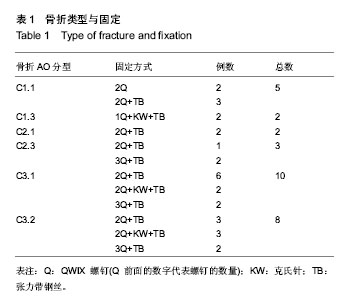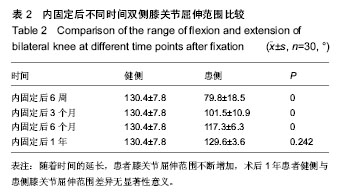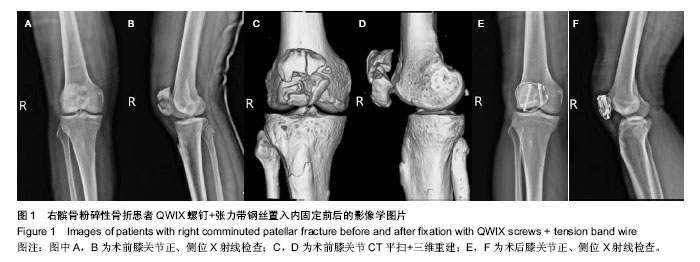| [1] Mehling I,Mehling A,Rommens PM. Comminuted patella fractures. Curr Orthop. 2006;20:397-404.
[2] Canale ST,Beaty JH,著.王岩译.坎贝尔骨科手术学[M].11版.北京:人民军医出版社,2011:2486.
[3] Yang L,Yueping Y,Wen Y.Management of displaced comminuted patella fracture with titanium cable cerclage. Knee.2010;17(4):283-286.
[4] 任玉猛,王红玉,韩广普,等.髌骨骨折克氏针钢丝张力带固定技术的改进及疗效观察[J].中国骨与关节损伤杂志.2009,24(6):542.
[5] Patel VR, Parks BG, Wang Y,et al. Fixation of patella fractures with braided polyester suture: a biomechanical study. Injury. 2000;31(1):1-6.
[6] Burvant JG, Thomas KA, Alexander R,et al.Evaluation of methods of internal fixation of transverse patella fractures:a biomechanical study. Orthop Trauma.1994;8(2):147–153.
[7] Mao N,Liu D,Ni H,et al.Comparison of the Cable Pin System with conventional open suegery for transverse patella fractures. Clin Orthop Relat Res. 2013;471(7):2361-2366.
[8] 陈晓斌,孙天圣,刘智,等.Cable-Pin系统治疗髌骨骨折的初步临床报告[J].中国骨与关节损伤杂志,2008;23(1):12-14.
[9] Liu X,Xu S,Zhang C,et al. Biomechanical study of posterior wall acetabular fracture fixation using acetabular tridimensional memoryalloy-fixation system.Clin Biomech. 2010;25(5):312-317.
[10] Liu X,Shang H,Xu S,et al. Patellar Shape-Memory Fixator for the treatment of comminuted fractures of the inferior pole of the Patella. J Mater Eng Perf. 2011;20:623-628.
[11] Bostman O, Kiviluoto O, Nirhamo J. Comminuted Displaced Fractures of the Patella. Injury. 1981;13(3):196-202.
[12] 邱贵兴.骨科手术学[M].3版.北京:人民卫生出版社,2012:345.
[13] Baydar ML,Atay T,Gurbuz O,et al.Compressive screwing of transverse patella fractures provides better resistance to traction than tension band.Eur J Orthop Surg Traumatol.2011; 21:105-110.
[14] Dargel J, Gick S, Mader K, et al. Biomechanical comparison of tension band and interfragmentary screw fixation with a new implant in transverse patella fractures.Injury.2010;41(2): 156-160.
[15] Carpenter JE, Kasman R, Matthews LS. Fractures of the Patella. Bone Joint Surg.1993;5:1550-1561.
[16] Young A, Stokes M, Crowe M. The size and strength of the quadriceps muscles of old and young men. Clin Physiol.1985; 5(2):145-154.
[17] 王广积,林明侠,沈宁江,等.影响椎弓根螺钉拔出力的相关因素[J].中国组织工程研究与临床康复,2008,12(35):6919-6922.
[18] Tian Y, Zhou F, Ji H, et al. Cannulated screw and cable are superior to modi?ed tension band in the treatment of transverse patella fractures. Clin Orthop Relat Res.2011; 469 (12):3429-3435.
[19] 韩国伟,刘少喻,赵卫东,等.双头和单头螺纹中空加压螺钉治疗齿突骨折的生物力学比较研究[J].中国临床解剖学杂志,2007, 25(3): 335-336. |


